The drywall system includes various large rigid sheets of finishing material used in drywall construction to face the interior walls of dwellings and other buildings. It is a system in which a panel made of calcium sulfate dihydrate (gypsum), with or without additives, typically extrudes between thick sheets of facer and backer paper, used in the construction of interior walls and ceilings. The plaster is mixed with fiber (typically paper, fiberglass, or a combination of these materials), plasticizer, foaming agent, and various additives that can reduce mildew, flammability, and water absorption. Drywall construction is the application of walls without the use of mortar or plaster.
Advantages of drywall system
- Faster Construction
- Better Comfort for Indoor Environment
- Cost-Efficient Construction
- Can be erected faster
- Reduces loads
- Flexibility
- Dry Construction
- Lightweight
- Fire-resistant
- Sustainable
- Uniformly smooth surfaces without any undulations
- Free from normal shrinkage and creep cracks
- Can be used for the construction of regular walls, ceilings and also as a partition
Different types of drywall systems
Regular drywall – Regular drywall or whiteboard is the most commonly used kind of drywall. It is usually brown on the back and gray or white on the side facing the room. Among the types of drywall, it is the cheapest and it can be used anywhere in the house. It comes in different sizes ranging in thickness from 3/8 inches to one inch.

Green board drywall – Green boards are moisture-resistant drywall. These are more expensive than regular drywall and have a coat of waterproof barrier that makes it perfect for you to install in places that see a lot of moisture such as kitchens and basements. It is also used as a tile backer in areas such as bathroom and basement walls, plus kitchens, and laundry and utility rooms.

Blue board drywall – Blue board drywall or plaster baseboard has both moisture and mold resistance properties. Its surface paper has special absorption qualities. You can use these for places such as your laundry room and bathrooms.
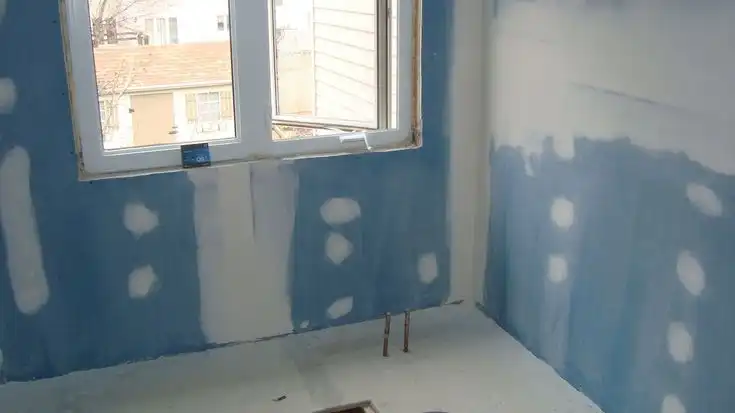
Purple drywall – Purple drywall is highly resistant to moisture, mold, and mildew. It is also highly resistant to scuffs, dents, and scratches allowing it to last longer and need fewer repairs over the years.It can be applied in bathrooms, laundry areas, garages, and other areas that are susceptible to rain and other sources of water.
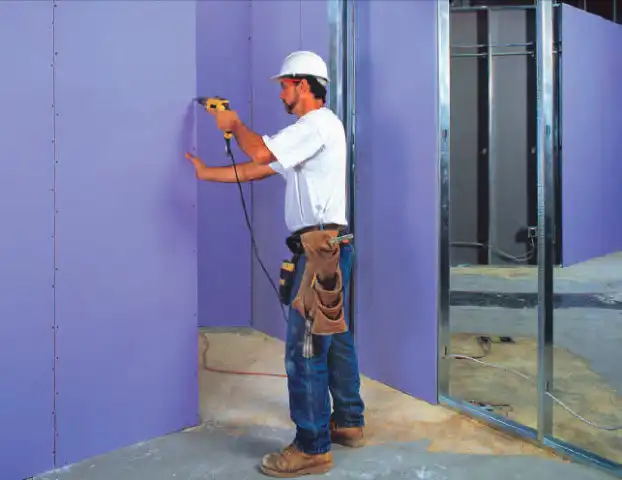
Paperless drywall – Paperless drywall is similar to traditional drywall in that it also contains a gypsum core. The difference is that instead of using paper as an outer wrapping, fiberglass is used instead. The gypsum core in paperless drywall is also water-resistant, unlike the core of traditional drywall. Bathrooms, kitchens, basements and garages are all areas that could benefit from the installation of paperless drywall.
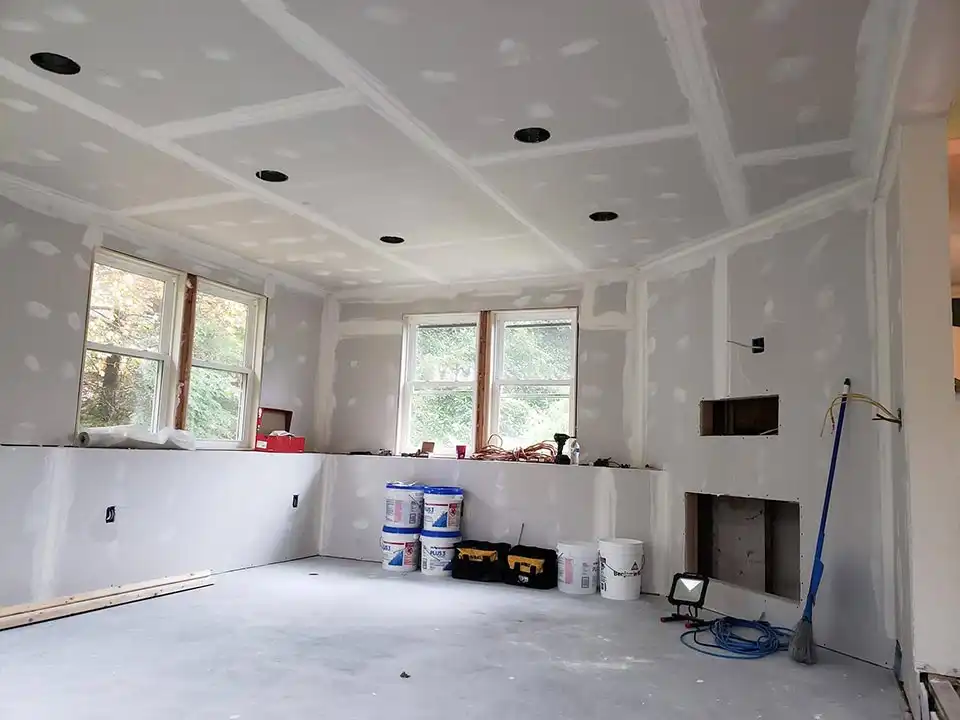
Type X fire-resistant drywall – Type X fire-resistant drywall is an interior gypsum board consisting of a solid set, fire-resistive, Type X gypsum core enclosed in ivory-colored face paper and a strong liner back paper. Type X drywall is made with special non-combustible fibers. It normally comes in 5/8-inches thickness and its extra thickness can also improve its soundproofing characteristics.
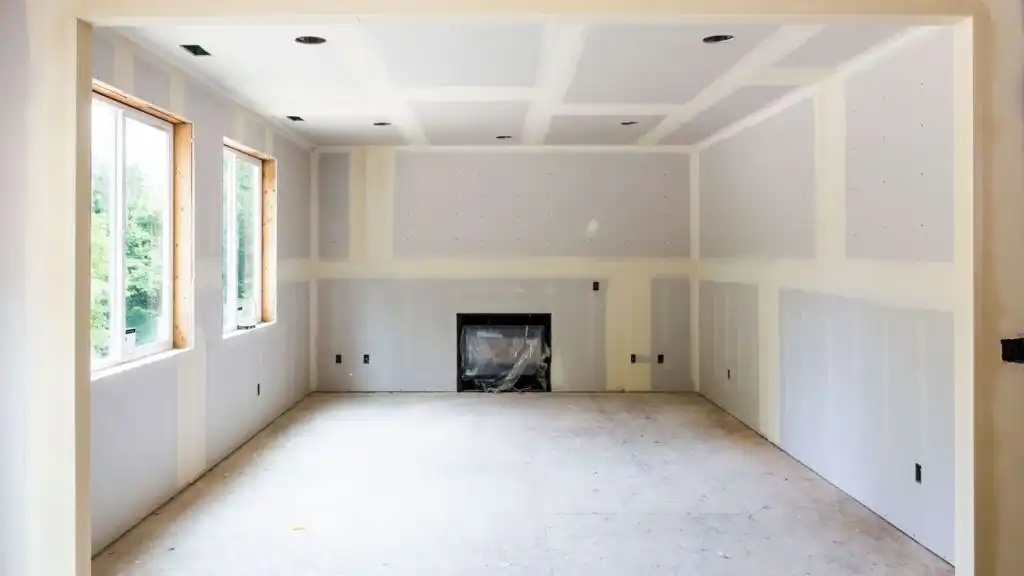
Soundproof drywall – Soundproof drywall is denser and also more difficult to cut. Inside the front and back covers lie layers of wood fibers, gypsum, and polymers. These layers increase the Sound Transmission Class and reduce noise from getting to the other room. This type of drywall can be used in homes in a pretty noisy neighborhood or for music rooms.
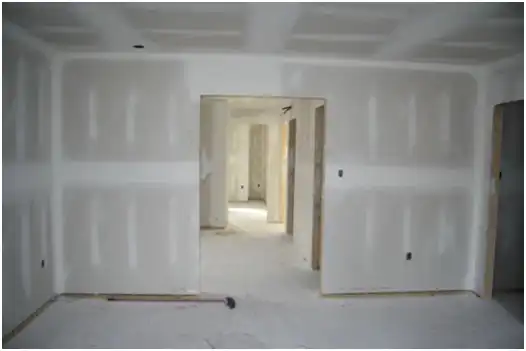
Materials used for drywall system
Drywall materials include plywood and wood pulp, asbestos-cement board, and gypsum. Wood fibre and pulp boards are made by compressing together layers or particles of wood with adhesives and are manufactured with wood grain and a variety of other surface effects. They are also available with high acoustic (sound-suppressing ) and thermal (insulating) capacities. Asbestos-cement boards are formed from a mixture of portland cement and asbestos fibre that has been wetted and then pressed into a board or sheet form. Organic fibres are added to some asbestos-cement boards to promote resiliency and ease of machining, and boards can also be treated with curing agents, water-repellent admixtures, and a variety of other substances to improve their performance and the ease with which they can be worked. Thin asbestos-cement sheets are usually backed with plywood or insulating board to increase their resistance to impact.

Drywall System- Product sizes and thickness
Product Sizes
- 4 x 8-Foot- Allows for either vertical or horizontal installation
- 4 x 10-Foot- Allows for tall walls and expansive ceilings
- 4 x 12-Foot- Allows for great rooms and areas with high ceilings. It covers more area in fewer panels
Product thickness
- 1/4-Inch: It’s ideal for walls with a subtle curve to them. The thin design makes it easier to manipulate the material.
- 1/2-Inch: It’s the most common choice for interior walls because they are easy to carry and hang. If weight is a concern, consider ultra-light half-inch drywall. It is 13 pounds lighter than other varieties for the same size and thickness.
- 5/8-Inch:It makes a great choice for ceiling applications because it helps to prevent sagging over time.
Conclusion
Whether you are in the process of new construction, remodeling or getting the right building materials is essential. Walls and ceilings must be stable and durable and the drywall system offers that stability. Drywall can be used for the construction of regular walls and ceilings but also as a partition. It can be removed and installed easily and can be cut in all sizes. It is manufactured faster and this makes a difference to the energy costs during their construction.
Image Source: finehomebuilding.com, royaldrywall.ca, pinterest.com, kuikenbrothers.com, znconstructionct.com, thisoldhouse.com, accommodationtimes.com,
unidusindia.com, lowes.ca


